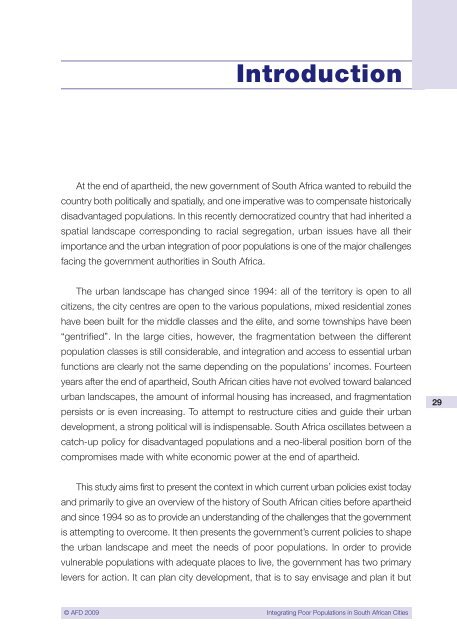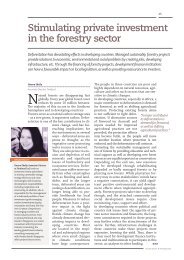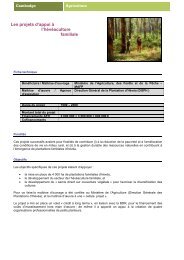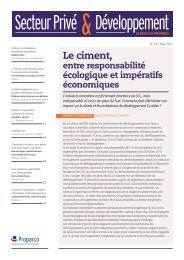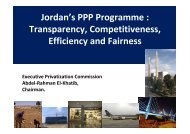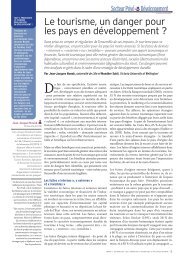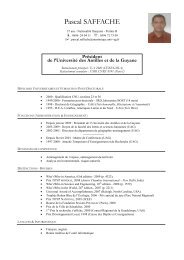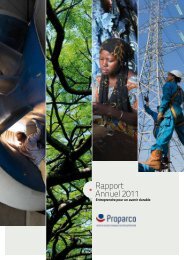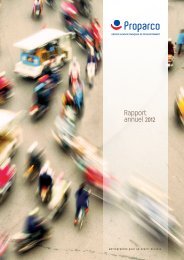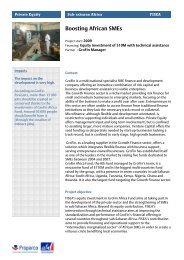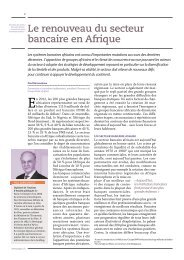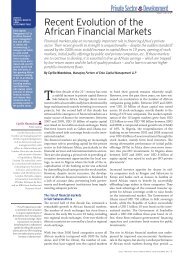Integrating Poor Populations in South African Cities - Agence ...
Integrating Poor Populations in South African Cities - Agence ...
Integrating Poor Populations in South African Cities - Agence ...
Create successful ePaper yourself
Turn your PDF publications into a flip-book with our unique Google optimized e-Paper software.
Introduction<br />
At the end of apartheid, the new government of <strong>South</strong> Africa wanted to rebuild the<br />
country both politically and spatially, and one imperative was to compensate historically<br />
disadvantaged populations. In this recently democratized country that had <strong>in</strong>herited a<br />
spatial landscape correspond<strong>in</strong>g to racial segregation, urban issues have all their<br />
importance and the urban <strong>in</strong>tegration of poor populations is one of the major challenges<br />
fac<strong>in</strong>g the government authorities <strong>in</strong> <strong>South</strong> Africa.<br />
The urban landscape has changed s<strong>in</strong>ce 1994: all of the territory is open to all<br />
citizens, the city centres are open to the various populations, mixed residential zones<br />
have been built for the middle classes and the elite, and some townships have been<br />
“gentrified”. In the large cities, however, the fragmentation between the different<br />
population classes is still considerable, and <strong>in</strong>tegration and access to essential urban<br />
functions are clearly not the same depend<strong>in</strong>g on the populations’ <strong>in</strong>comes. Fourteen<br />
years after the end of apartheid, <strong>South</strong> <strong>African</strong> cities have not evolved toward balanced<br />
urban landscapes, the amount of <strong>in</strong>formal hous<strong>in</strong>g has <strong>in</strong>creased, and fragmentation<br />
persists or is even <strong>in</strong>creas<strong>in</strong>g. To attempt to restructure cities and guide their urban<br />
development, a strong political will is <strong>in</strong>dispensable. <strong>South</strong> Africa oscillates between a<br />
catch-up policy for disadvantaged populations and a neo-liberal position born of the<br />
compromises made with white economic power at the end of apartheid.<br />
29<br />
This study aims first to present the context <strong>in</strong> which current urban policies exist today<br />
and primarily to give an overview of the history of <strong>South</strong> <strong>African</strong> cities before apartheid<br />
and s<strong>in</strong>ce 1994 so as to provide an understand<strong>in</strong>g of the challenges that the government<br />
is attempt<strong>in</strong>g to overcome. It then presents the government’s current policies to shape<br />
the urban landscape and meet the needs of poor populations. In order to provide<br />
vulnerable populations with adequate places to live, the government has two primary<br />
levers for action. It can plan city development, that is to say envisage and plan it but<br />
© AFD 2009 <strong>Integrat<strong>in</strong>g</strong> <strong>Poor</strong> <strong>Populations</strong> <strong>in</strong> <strong>South</strong> <strong>African</strong> <strong>Cities</strong>


